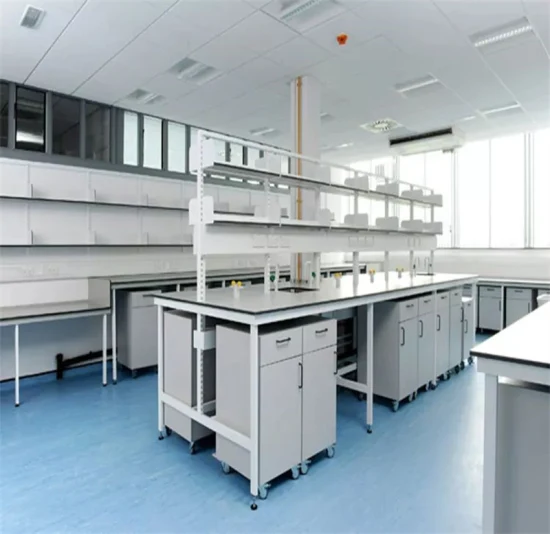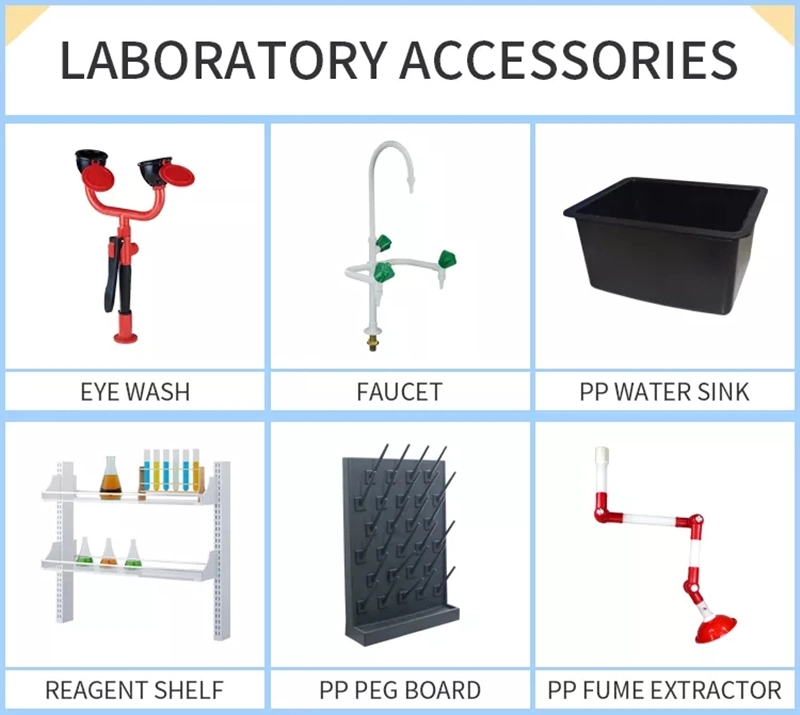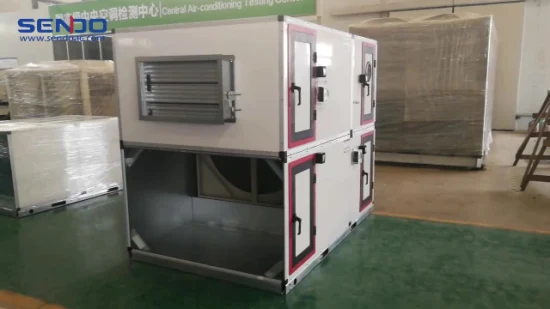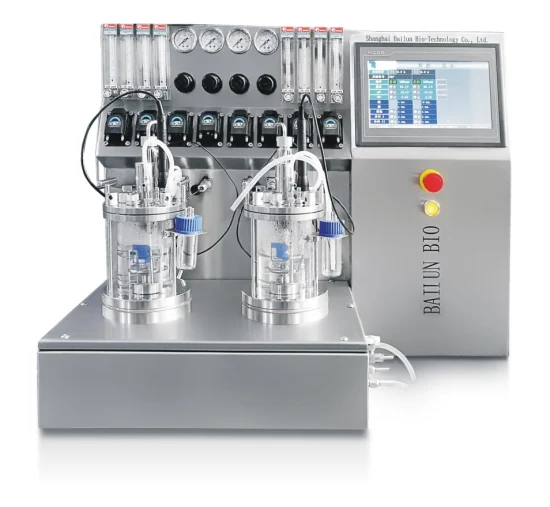
Chemistry Physics Biology Laboratory Corrosion Resistance Abrasion Resistant Stainless Steel Wood Reagent Rack for Lab Bench Island Bench Wall Bench
Basic Info.
| Model NO. | APL-RR-001 |
| Material | Stainless Steel |
| Worktop | 12.7mm Physiochemical Board |
| Cabinet | 1.0mm Cold-Rolled Steel |
| Sink | PP/ Stainless Steel 304/Epoxy |
| Frame | C-Frame Customized |
| Material Type | Metal, Wood, Polypropylene, Ceramic, Marble, Epoxy |
| Function | Work Station |
| Product Name | Reagent Rack |
| Transport Package | Polyfoam Inner Lining with Multi Layer Carton Box |
| Specification | Customized |
| Trademark | Ample |
| Origin | Chengdu, China |
| HS Code | 3926909090 |
| Production Capacity | 10000 Meter/Meters Per Month |
Packaging & Delivery
Package Size 2000.00cm * 900.00cm * 1200.00cm Package Gross Weight 50.000kgProduct Description
Product DescriptionRacks are used to support, organize and store various types of glassware, labware and other items. Laboratory racks are available for pipets, test tubes, microtubes, vials, petri dishes, microplates, funnels, bottles, equipment, and instruments like thermometers or hydrometers. Racks may be made from a variety of materials, including plain or epoxy-coated metal, wood, and various plastics. Racks for test tubes and microtubes have openings of various sizes to accommodate specific or a range of tube diameters, and some racks are designed for use with specific pieces of labware.
Lab reagent shelving is the smart storage solution for a seamless workflow and it can keep work surfaces clutter-free. We can install it on island and peninsula benches to engineer in convenient storage space for regularly used items.
A laboratory reagent can be described as a substance used to measure, detect, or create other substances during a chemical reaction conducted in laboratories. In other words, we can say that these are the substances added to the laboratory tests to carry out a chemical reaction or to check whether any reaction occurs or not.
Most people confuse reagents with reactants. However, these two are different based on their consumption in the reaction. On the one hand, a reagent doesn't necessitate to be consumed during the reaction. Contrastingly, a reactant always gets consumed in the test.
| BENCH SIZE | Length : customized ,it's better as the site measurement |
| Width : 600-1500mm ( 23.62'' - 60'' ) | |
| Height :750-900mm (30''-36'' ) | |
| STRUCTURE | 1. C frame |
| 2. H frame | |
| 3. Pedestal (floor mounting ) | |
| WORKTOP | 1. Phenolic resin top |
| 2. epoxy resin top | |
| 3. Ceramic top | |
| 4. Stainless steel top | |
| 5. Marble top | |
| 6. Laminated top | |
| CASEWORK MATERIALS | 1. 18 gauge Cold rolled steel ,surface with laboratory grade powder coating . Door and drawers are double skinned to reduce noise level |
| 2.galvanized steel sheet ,surface with laboratory grade powder coating. | |
| Cabinet Frame | C frame Steel structure,60 * 40 * 2mm rectangular square steel tube Spraying epoxy resin powder, all the steel parts will be treated to prevent corrosion and chemical effects. The surface will be able to easily clean and sterilize .have not any welding points.with the adjustable leveling feet. |
| CABINET HARDWARE | Handle : stainless steel C frame handle / aluminum alloy embedded handle /aluminum alloy long handle |
| Hinges : five knuckle-type barrel door hinges/self closing hinges | |
| Slideway : self-closing three section slide rail, no noise ,for the drawers | |
| Edge profile | The worktop edges have 3mm level or radius edge |


Reagents should be stored in a cool (less than 25-30 °C), dry, dark place to ensure maximum shelf life. Some reagents, as indicated on the package label, should even be refrigerated. The shelf life may not be valid once a container such as a bottle has been opened. This is because contaminants from the atmosphere can enter the container and may react with the reagent remaining in the bottle.
When using solutions or bulk powders packaged in bottles, open the bottle for as short a time as possible, just enough time to pour or measure out a portion of the reagent, and then replace the cap tightly. This will minimize the risk of contamination. Also, once reagent has been removed from a container, never add it back to that same container.
Reagents that have exceeded the expiration date may still function correctly; however, you need to verify this on a weekly basis using a standard solution in place of the sample (see the accuracy check section in your step-by-step procedure). Correct results using a standard solution with a concentration near the top of the range for the test will ensure that the reagent will function over the full range of the test. If you are running a test for a parameter for which there is no standard solution, such as ozone or sulfide, do not use reagents that have exceeded the expiration date.






